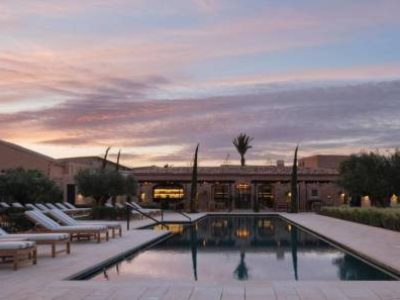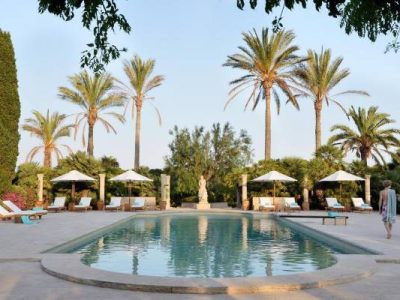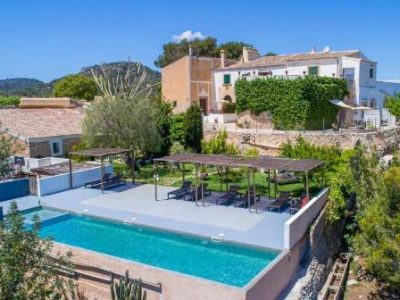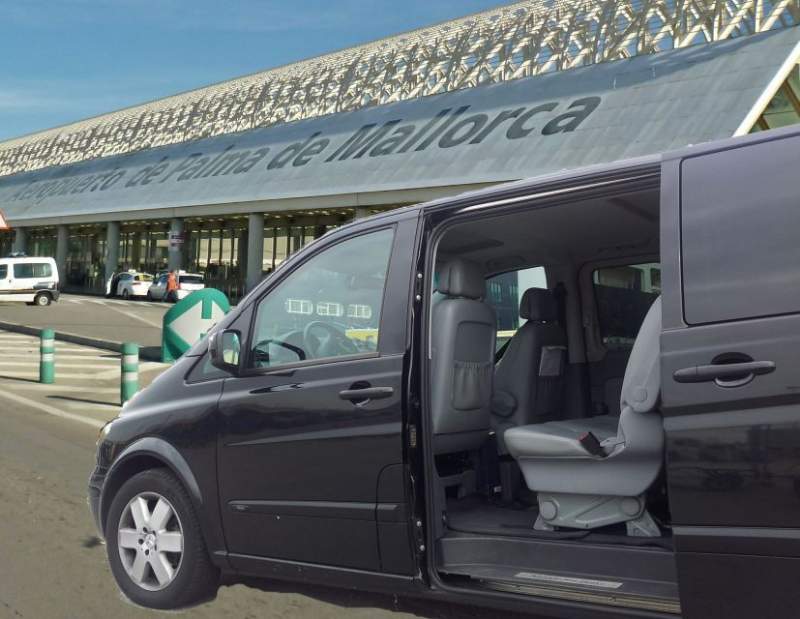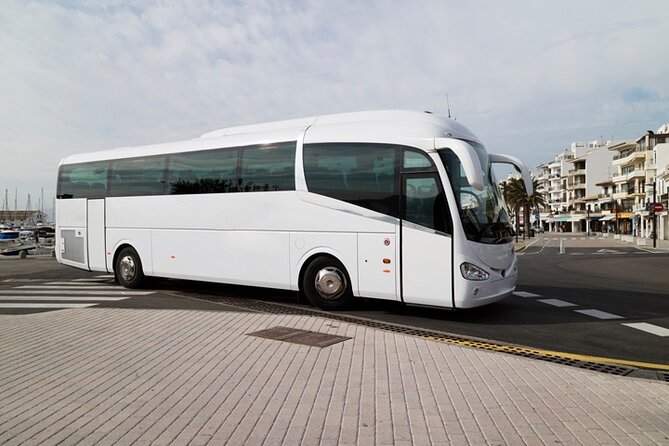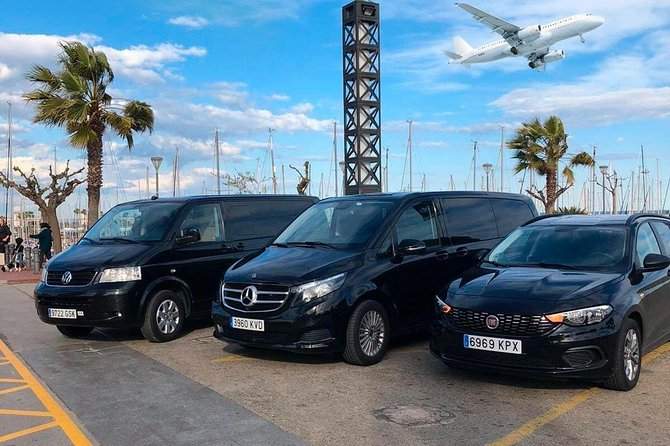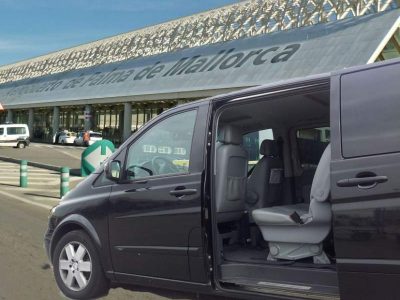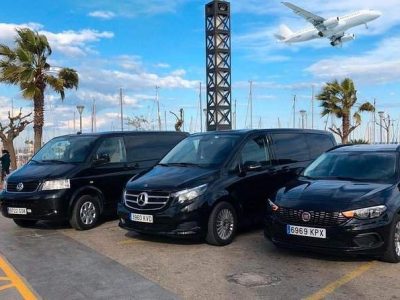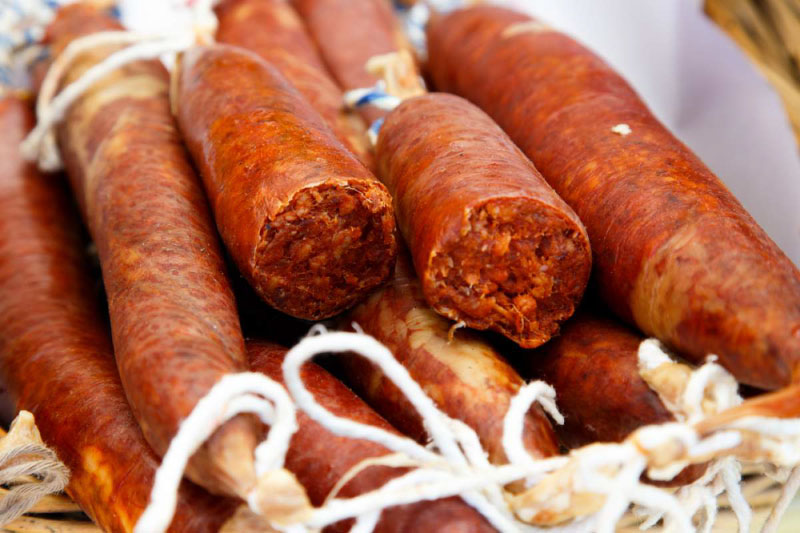All your holiday planning needs in one place, letting you book direct and benefit from official online rates
Prehistory and Talayotic culture
The first vestiges of human occupation within the municipal border of current day Santanyí date from the Bronze Age, around 2,000 BC. Some of the most remarkable remains of this time is seen in the caves of Cala Santanyí and es Pontas. These derive from a time known as the pre-Talayotic, because as you will read later, one of the most significant prehistoric periods to the Balearic Islands is associated with the Talayotic culture.
The Talayotic, or Talaiotic, culture refers to a period of Mallorca and Menorca from around 1,100 BC to 123 BC. The name has been given to this culture because of the construction of towers, lookouts, which in Catalan is called “talaias”. Some of the best examples of Talayotic constructions found in Santanyí include the ones of coves del Rei, Can Simonet, n’Ebrí, es Loret Vell, Son Danús, Son Talaies de Ca Jordi, es Rafal des Porcs or Son Rossinyol.
Particularly the Rafal des Porcs is an interesting find, as it clearly showcases the remains of an entire enclosed village. But also the Sa Talaia Grossa is worth noting, another walled enclosure located close to the natural caves of Drac with an inland freshwater lake.
The Talayotic constructions belonging to the site of Son Danús was declared an Artistic and Historical Monument in 1946. It is located next to the main road that connects Santanyí with Palma.
A final Talayotic settlement to mention, is the one of Son Talaies de Ca Jordi, a walled enclosure considered one of the largest on the island.
The latter three sites have been the most excavated and have found indigenous and Roman pottery, Roman tombstones, small bronze statues, bones, coins and stones with cave engravings.
The Talayotic culture was introduced on the island when the first colonizers from ancient Greece and Carthage found their way to the archipelago in the Mediterranean. It was known that the area in the western Mediterranean and Europe was rich of metals, which triggered the tradesmen of these ancient worlds to start exploring.
The new settlers mixed with the indigenous peoples, who had been living a somewhat peaceful life on the island. The indigenous peoples from the pre-Talayotic period mainly lived in natural and artificial caves, or in houses built in a style known as “naviforms” due to their vessel shaped structure. However, with the introduction of the Talayotic culture, the whole idea of communities and habitations changed from solely being a place to have shelter to have a defensive functionality with the towers and walls.
The mixture of Phoenician and indigenous warriors created a new “super soldier” of the ancient world, the Balearic foner. The foners are mentioned in chronicles of the wars in the Italian peninsula and in the Punic Wars fighting against the Roman army. They were highly skilled in slinging, hence they are popularly known as “Mallorcan slingers”, due to their high accuracy and impressive distance in their shots.
The First Roman occupation
In 123 BC, Roman general and consul Quintus Caecilius Metellus conquered the island. The strategic location of Mallorca would allow the Romans to safely engage in sea trade and use the naval route as a shortcut between the Italian and Iberian peninsulas when traveling.
Metellus had studied the island, but more importantly, he had studied the slingers and knew of their strength and capabilities. The Mallorcan slingers did not only crush bones, they sunk ships with the projectiles from their slingshots. Metellus then came up with the idea to strap leather around his ships to function as a protective shield against the projectiles of the slingers, which would allow him to get close enough to the shores to disembark his troops.
After fighting down the initial resistance of the Balearic warriors, a long and protracted journey began to find the indigenous people who had retrenched themselves in the Talayotic villages and caves all over the island. Eventually the entire island was conquered and the Balearic foners became part of the Roman army. In fact, they are mentioned by Ceacar in the war against the Germanics in 56 BC, as a part of the elite troops fighting alongside the horsemen. This again proves the uniqueness of these island warriors.
Following the successful campaign, Metellus was commemorated with the nickname “Balearicus”.
The Romans built the two main cities of Pol-lentia (current day Alcúdia) and Palma/Palmera, whereof the first was the capital. The Romans also left their mark in the area of Santanyí i.e. the funaral caves of sa Marededéu where several Roman funerary gifts have been discovered. The Roman village that was here, was probably located in the lands of Son Danús and Calonge. Figures and ceramics have also been discovered in the areas of Cas Traginer or in Són Cosme Ponç.
Archaeological studies suggests that the Romans made a division of the lands, like small neighborhoods in their village. Their way of life was based on agricultural activities and possibly exploitation of maritime resources.
Under Islamic rule
In 902 the archipelago came under the Emirate of Cordoba, ruled by the Umayyad dynasty. It was Issam al-Khawlaní, whom during a pilgrimage to Baghdad discovered the Balearics and after a successful conquest, he was awarded the title of walí (governor) of the island.
Following the foundation of Madīna Mayūrqa, current day Palma, the island was divided in twelve administrative districts, the so-called “ajzà” (singular: Juz). At that time, the area of the current day Santanyí town was called Adeia, a farmstead that belonged under the Juz of Manacur, a district that also comprised Felanitx, Manacor, Sant Llorenç, Ses Salines, Campos and Porreres.
The Moors lived in tribes and small communities scattered in the countryside, with cultivation of cereals as the main activity. The farmsteads was known as “alquerias” and the cottages as “rafals”. In the farmstead of Alqueria Blanca (a hamlet that has preserved its name from this period), the main mosque of the area was located. Other farmsteads and place names that has survived throughout the centuries are Albocora, S’Almunia, Benilassar (Son Danús), Binigebidi (Rafal des Porcs) or Mandalmar (es Llombards).
The Catalan-Aragonese conquest
In the years between 1229 and 1232, the Catalan-Aragonese alliance led by King Jaume I of Aragón, conquered Mallorca from the Moors. It began with the siege of Madīna Mayūrqa in September, that was brutally plundered and bathed in blood by the ruthless Christian troops, no one was spared. Those Moors not killed were taken as slaves or managed to flee to the mountains of Tramuntana or Llevant.
The areas of Santanyí and Felanitx were some of the last places to be conquered by the Christians. The protagonist of these campaigns, was the count of Roussillon and Sardinia, Nunó Sanç, whom in return for his major effort was granted these areas, along with several other lands in Mallorca, as reward. Following the death of Nunó Sanç in 1242, his lands returned to King Jaume I, whom them sold the lands to knights and nobles. In 1289, Berenguer Danús was documented owner of the biggest estate, the Son Danús, which was the former Moorish farmstead of Benilassar, and one of the most important estates in the history of Santanyí due to its production of cereals.
The new Christian rulers were quick to demolish the mosque in the area and establish a chapel to serve the crowing congregation coming from Catalonia to settle. The first primitive church was built in the years between 1248 and 1265, dedicated to Santa Maria de Santanyí, and, located in the current day Placeta de la Canal.
After the conquest of Mallorca, the king wrote the Llibre del Repartiment de Mallorca (Book of Division of Mallorca), a documentation of the division of the lands of Mallorca. In this documentation, the name Sancti Aini appears for the first time. Etymologists suggest that the name could derive from the Latin “Sancti Agni” meaning something like “Holy Lamb“, hence the lamb in the town’s crest.
The foundation of Santanyí
In the year 1300, King Jaume II of Mallorca promulgated a set of ordinances which founded twelve towns on the island. These ordinances prescribed a set of rules that was made to establish a societal structure and make it easier to collect taxes for the monarchy.
Each settler had to purchase 3.55 ha of arable land, 7.10 ha of garrigue and a quarter of land (1,775 m2) in the new town, where he had to build a houses and move to live here within the next half year. For a possession like this, the settler would pay a tithe and a cash census (tax).
The ordenadors (the person in charge of effectuating the ordinances), were required to designate 355 ha of land and 710 ha of garrigue. The owners of these lands were then obliged to establish them to the new settlers, the so-called “acaptadors”, in exchange for a tax paid in metal determined by the ordenadors.
With the new ordinances also declared the premises of what should be included and the delimitation of the perimeter of the town and the affected areas. Previous design patterns of small villages and functional delimitation of the arable territory, as well as the extent of garrigues, determined the location of the town.
In regards to the creation of the town, the width of the streets was set to measure 6.3 meters, the center of the town should be enforced by a protective wall or other fortified enclosure, and, the total perimeter of the town was expected to occupy no more than about 17.76 ha.
It was the ordenadors who was responsible for defining the space needed, to drawn the streets and make sure to provide necessary infrastructure such as water supply in the community spaces. Surrounding the fortified town center, several neighborhoods would by established.
In 1311, the king inserted the first ever royal mayor in Santanyí, Ramon Albert. Santanyí was one of the towns with the most rapid population increase, already in 1229, 570 inhabitants was recorded plus their slaves. In 1427, 4.8% of the local population was slaves.
It was also in the beginning of the 14th century that the second church of Santanyí was constructed, in the same place of the current church. The chapel of Roser inside is actually the old primitive church, which in 1390 was fortified as seen on the exterior.
The pirate attacks
One of the biggest treats of Santanyí, was the pirate raids that happened in the 16th and 17th century. One of the main triggers of these raids, was the approach of the Ottoman empire trying to capture parts of the western Mediterranean. The Ottomans paid privateers from North Africa to attack the coastlines of Mallorca. The pirates took shelter on the small island of Cabrera south of Mallorca, from where they could easily plan their raids.
One of the most notable attacks on Santanyí happened on October 3rd, 1531, when pirates invaded and sacked the town. Civilians took refuge inside the old fortified church, but many was kidnapped by the pirates or killed.Again in 1546, the pirates attacked and kidnapped 36 people, who was returned after their families paid premium ransoms.
As a response to the numerous attacks, watchtowers and other defense works was established along the coastal line of Santanyí. The function of the watchtowers was to spot enemy vessels in the bay and then via smoke signal alarm the next tower that, would then light a fire and alarm the inhabitants. All in all, more than 40 different defense structures was constructed, some of them demolished today. In the hills rising behind Santanyí, a bit west of the Alqueria Blanca hamlet, you will find the fortified Santuari de la Mare de Déu de Consolació (Sanctuary of Our Lady of Consolation), built around 1523 in 205 meters altitude as a refuge for the population.
Because of the insecurity and vulnerable position of the town, the town faces a massive depopulation in these years, more than 40 families left after the attack in 1531. After the second attack in 1546, the inhabitants demanded a city wall to be created to protect them. As of 1571, a wall was constructed to protect the urban core of Santanyí. The wall started down Bisbe Verger Street, followed by Rafelet Street, continued along La Paz Street, passing the Rectoria (rectory) and El Roser (church), and finally, the Porta Murada (wall gate). The Porta Murada was the main entrance gate to the town, and at the same time served as a prison and guard tower. Up until 1980, the prison cell inside was still in use.
Some of the important watchtowers in Santanyí, was the Torre En Beu in Cala Figuera (1569), Torre Nova de sa Roca Fesa in Cala Santanyí (17th century) and Torre d’en Bassa in Portopetro (17th century).
In 1740, the fort of Cala Llomga was added to the military defense system. It is 26 meters wide, and was equipped with canons and armed soldiers.
The Caciquism period
In 1868, Santanyí faced a revolt of the citizens which led to a destruction of the municipal archive and a lot of disturbance in the town. What triggered the revolt, was when local politician Joan Verger i Tomàs, also known as “sa Geneta”, suddenly had too much power, which he abused for personal winning. He was accused of having too much influence on the social and economic life in Santanyí during a period when the caciquism was exercised in Santayí (1868-1936). This is one of the only and most significant examples of Caciquism seen on the island. Professor of the University of the Balearic Island, Cristòfol-Miquel Sbert, have written a 300-page book on this specific subject.
The smugglers paradise
From the late 19th century, Santanyí became a transit central for cigarettes and other contraband. Sailors from Santanyí established connect6ions in Algiers from where they bought cheap tobacco and smuggled it back to Mallorca. The tobacco market was widely dominated by the Tabacalera (formerly Compañía Arrendataria de Tabacos) company that was bureaucratically well-organized, making it impossible for any competition to enter the market.
In 1880, the sailor Antoni Amengual “Fasol” was one of the protagonists, or pioneers, in trafficking tobacco. He soon established a network involving honest businessmen, farmers and sailors, who participated in the process of smuggling tobacco from the port of Santanyí (current day Cala Figuera) to Palma. Smugglers used cars with fake license plates so that the police did not see they came from Santanyí. The poverty of the people made it in everyone’s interest to help the smugglers, who, in return shared some of the profit and catch. They even bribes the local police with all kinds of loot and merchandise.
One day, a certain Mr. March arrived by car in Santanyí in search for tobacco. He saw the potential of this undercover smuggling business, and in Fasol, he saw a compliant and risky skipper to start an adventure with. March’s great sense for business soon proved itself worthy for the sailors of Santanyí, as their salaries was almost doubled in just a few years covering naval routes between the Balearics, North Africa and several ports on the Iberian coast.
Towards the end of his career, Fasol turned his interest to building boats. Based on an experience he had one time in Alicante, he built two boats, each had one end of a trawling net attached to it, and together the two boats pulled the trawling net. He called this boat the “Ox Boat”. This fishing technique improved the amount of catches and gave rise to a new market of delivering fresh fish to the interior of the island. Soon, all villages of the island had access to fish which became a part of the local diets.
With the increased inability to trade tobacco, the sailors ceased to be smugglers and instead invested their money in the fishing industry or in acquisition of lands. An example of this is Cala d’Or, a tourist colony project devised by the Ibizan Josep Costa.
The demographic change
From the beginning of the 20th century there was a great emigration from Santanyí, partly forced by the wars, and, in 1925, Ses Salines segregated to become an independent municipality. Another incident that caused a decline in the population was the Spanish Flu of 1918.
From the 1950’s, the advent of tourism changed the scene. The Cala d’Or project attracted European holidaymakers, and people from the Iberian peninsula, especially from the south, who was attracted by the great job opportunities.
From the 1980’s the tourism industry really took off, and already in 1984, there was a total of 6,557 hotel beds. Already from 1981, 4,226 holiday homes was recorded in the municipality. The resorts of Cala Santanyí, Cala Llombards and Cala Figuera soon followed.
The tourism industry also gave the economy a new dimension. Before commercial fishing was practiced, cultivation of dry soil and stoneware was the main drivers in the local economy.








